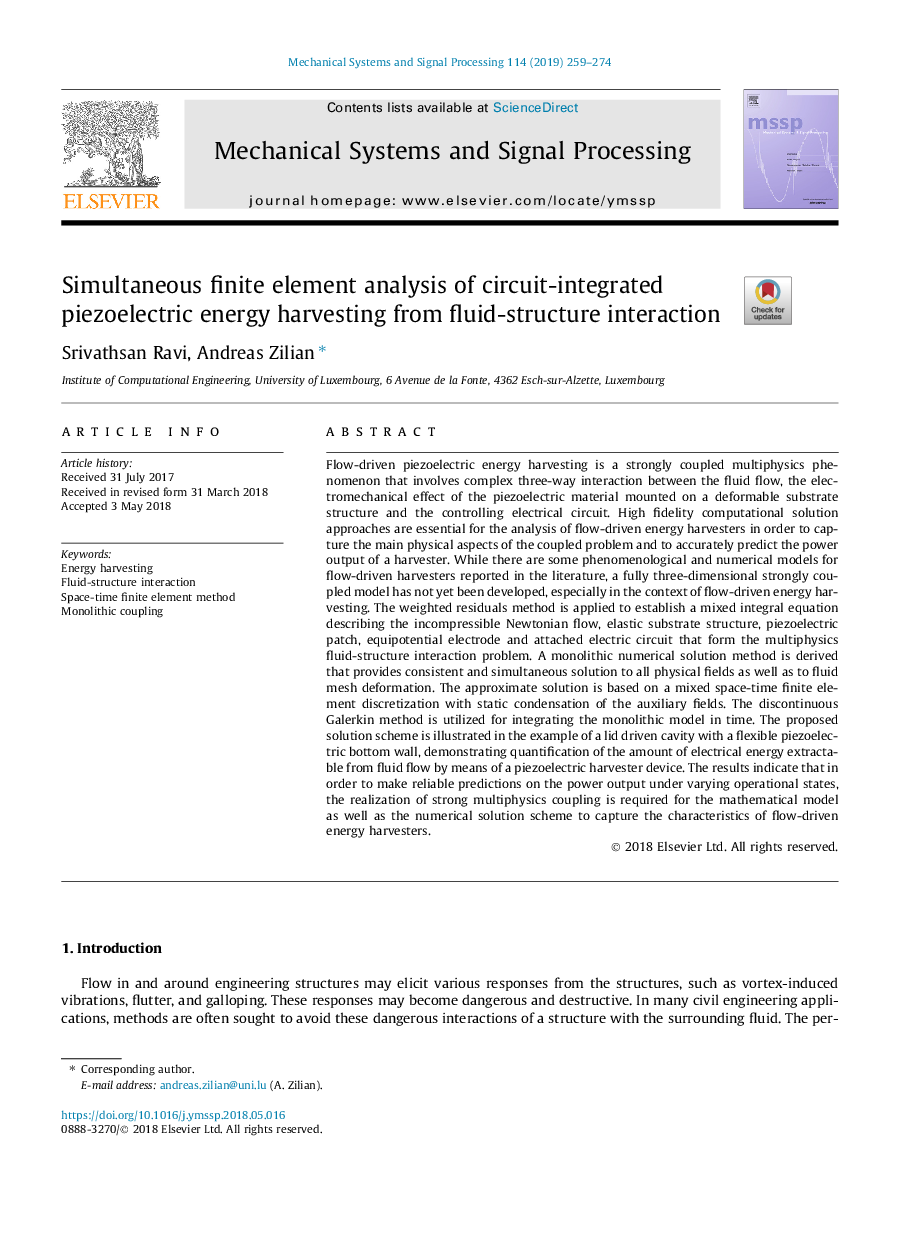| کد مقاله | کد نشریه | سال انتشار | مقاله انگلیسی | نسخه تمام متن |
|---|---|---|---|---|
| 6953623 | 1451821 | 2019 | 16 صفحه PDF | دانلود رایگان |
عنوان انگلیسی مقاله ISI
Simultaneous finite element analysis of circuit-integrated piezoelectric energy harvesting from fluid-structure interaction
ترجمه فارسی عنوان
تجزیه و تحلیل عنصر محدود با هم از برداشت انرژی پیزوالکتریک مدار از اثر متقابل ساختار مایع
دانلود مقاله + سفارش ترجمه
دانلود مقاله ISI انگلیسی
رایگان برای ایرانیان
کلمات کلیدی
برداشت انرژی، تعامل مایع مایع، روش عنصر محدود فضا زمان، اتصال یکپارچه،
موضوعات مرتبط
مهندسی و علوم پایه
مهندسی کامپیوتر
پردازش سیگنال
چکیده انگلیسی
Flow-driven piezoelectric energy harvesting is a strongly coupled multiphysics phenomenon that involves complex three-way interaction between the fluid flow, the electromechanical effect of the piezoelectric material mounted on a deformable substrate structure and the controlling electrical circuit. High fidelity computational solution approaches are essential for the analysis of flow-driven energy harvesters in order to capture the main physical aspects of the coupled problem and to accurately predict the power output of a harvester. While there are some phenomenological and numerical models for flow-driven harvesters reported in the literature, a fully three-dimensional strongly coupled model has not yet been developed, especially in the context of flow-driven energy harvesting. The weighted residuals method is applied to establish a mixed integral equation describing the incompressible Newtonian flow, elastic substrate structure, piezoelectric patch, equipotential electrode and attached electric circuit that form the multiphysics fluid-structure interaction problem. A monolithic numerical solution method is derived that provides consistent and simultaneous solution to all physical fields as well as to fluid mesh deformation. The approximate solution is based on a mixed space-time finite element discretization with static condensation of the auxiliary fields. The discontinuous Galerkin method is utilized for integrating the monolithic model in time. The proposed solution scheme is illustrated in the example of a lid driven cavity with a flexible piezoelectric bottom wall, demonstrating quantification of the amount of electrical energy extractable from fluid flow by means of a piezoelectric harvester device. The results indicate that in order to make reliable predictions on the power output under varying operational states, the realization of strong multiphysics coupling is required for the mathematical model as well as the numerical solution scheme to capture the characteristics of flow-driven energy harvesters.
ناشر
Database: Elsevier - ScienceDirect (ساینس دایرکت)
Journal: Mechanical Systems and Signal Processing - Volume 114, 1 January 2019, Pages 259-274
Journal: Mechanical Systems and Signal Processing - Volume 114, 1 January 2019, Pages 259-274
نویسندگان
Srivathsan Ravi, Andreas Zilian,
